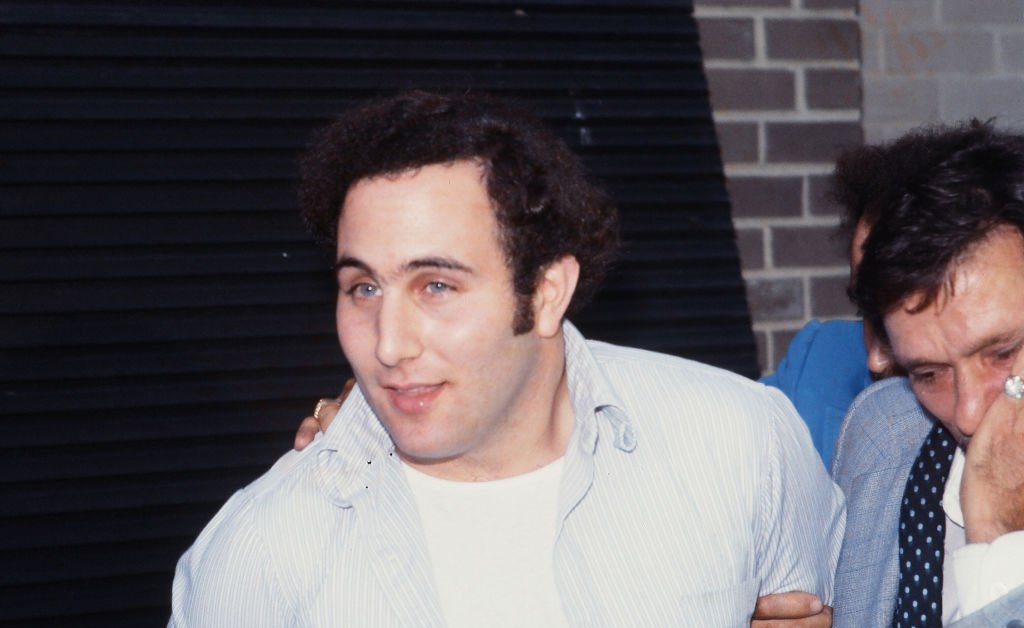Nearly 50 years after the arrest of David Berkowitz, the serial killer who terrorized New York City between 1976 and 1977, a new documentary series, Conversations with a Killer: The Son of Sam Tapes, explores that chilling period in history.
Out July 30, the three-part series features audio of past interviews Berkowitz did with Rochester Democrat and Chronicle journalist Jack Jones, plus a new interview with Berkowitz, who is serving a life sentence in upstate New York.
Berkowitz, now 72, has never shied away from media attention. Before he was caught—a parking ticket traced his getaway car to his home address—he sent letters to police detectives and even the New York City tabloid columnist Jimmy Breslin encouraging them to keep up the search for him.
Conversations with a Killer also features interviews with the victims’ loved ones, researchers, and former law enforcement assigned to the case. Here’s how the series explores what drove Berkowitz to murder.
Childhood resentment
The series traces the origins of Berkowitz’s discontent to his adoption in 1953. While the Bronx native was adopted by a couple that loved to dote on him, one day, his father told Berkowitz that he was adopted, his mother died in childbirth, and his biological father didn’t want him.
“I thought there was a man out there that hated me and was possibly going to try to kill me for causing the death of his wife,” Berkowitz tells Jones.
He wasn’t the same after that moment, and though his adoptive mother loved him, he began to lash out at her, tearing her blouses and ripping her lipstick out of its container. When he graduated high school, he found out that his biological mother was actually alive and visited her. He learned that he was born out of wedlock, and his father didn’t want to stick around.
As he wrote in a letter, he felt like an “outsider” who was on a “different wave length than everybody.” In the recordings, Berkowitz says: “It brings me back to the idea of women, young girls having sex in a car with guys. Carelessness, you know? It was kind of degrading to me to see that I was an accident…Anger took over to replace the guilt.” He describes himself as a “loner” who felt “stigmatized for adoption” and got to a point where “I was so angry, I blamed others, and I started committing my crimes to make people pay attention to me.”
When Berkowitz realized he was the product of an affair, he began “targeting young lovers having illicit sex in their cars, producing unwanted children, so that there wouldn’t be another child born with this level of alienation and resentment,” director Joe Berlinger says. “But obviously lots of children discover that they’re adopted, and lots of children have traumatic childhoods, and they don’t turn into killers. So that’s what endlessly fascinates me: Where is that line where somebody will go off the deep end versus somebody who will just soldier on?”
Reign of terror

There wasn’t initially a clear trend in his targets, so New Yorkers were paralyzed with fear. Women with long brown hair were advised to get shorter haircuts or wear their long locks in a ponytail. Some even bleached their hair blond and donned baggy clothing on a night out. Many parents begged their daughters to have their dates at home or put off dating until the killer was caught.
As TIME reported in the Aug. 15, 1977, issue of the magazine, “If terrorists might well pose a greater potential danger to more people, there was much more apprehension of the threat of random shots in the dark from the lone gunman. He has haunted lovers’ lanes, attacked couples coming from strobe-lighted discotheques, even opened fire at a pair of girls on a house porch and shot another as he passed her on a street.”
Several of the victims were couples. Berkowitz was always disappointed that he struggled to have a romantic relationship with a woman. He sought out women who reminded him of what his birth mother might have been like at a young age. “I felt like this is what I had to do, like I felt I was getting revenge,” he can be heard saying in a recording in the doc.
His first target, Wendy Savino, appears in Conversations of a Killer. The New York Police Department confirmed in 2024 that she was the first “Son of Sam” victim. He shot her on April 9, 1976, with a different revolver than the one he used to kill the other victims, so that was one reason authorities missed the connection initially. Now 88, she pulls out a sketch of Berkowitz in the doc and says, “I’ve been carrying this around in my handbag for 47 years.”
Lessons from “Son of Sam” for today
“I actually think this case is a foundational case in our current and ever-growing obsession with crime,” Berlinger says. “The way Berkowitz interacted with the media, the way the media willingly cooperated, I mean, everyone in New York couldn’t wait for the next headline and next newspaper to buy. This is obviously before the 24-hour news cycle, before social media.”
Berlinger notes that back in the 1970s, police departments weren’t readily sharing computerized data with one another the way they do today. As he puts it, “the ‘70s and early ‘80s was kind of the golden age of serial killers going on for a long time before they were caught.” Despite conspiracy theories that suggest “Son of Sam” refers to multiple killers, Conversations with a Killer makes clear that Berkowitz was the sole perpetrator, arguing that when Berkowitz was arrested, the killings stopped.
The series ends with Berlinger asking Berkowitz two questions in a 2024 phone interview. When Berlinger asks Berkowitz what he wants people to know about his story, Berkowitz emphasizes that he’s very sorry for the murders, that he was in a “dark space” in his life, and that his life “spun out of control, and I just couldn’t get on that right path.” Then, when Berlinger asks Berkowitz what advice he’d give to his younger self, he says that he should have gotten help sooner, stating, “‘Dave, run for your life. Get help.’ I could have gone to my dad. I could have gone to my sister. But I kept everything to myself…I wish I could start all over again and take a better path in life.”
While Berlinger wrestled with whether to give the serial killer a platform, he thought viewers could learn from this answer. “That just touched me so deeply,” he says. “Putting that message out there can help somebody realize, ‘I’m feeling some of this rage. I need to get help,’ or empower people to encourage someone with a lot of pent-up anger to seek help.”








